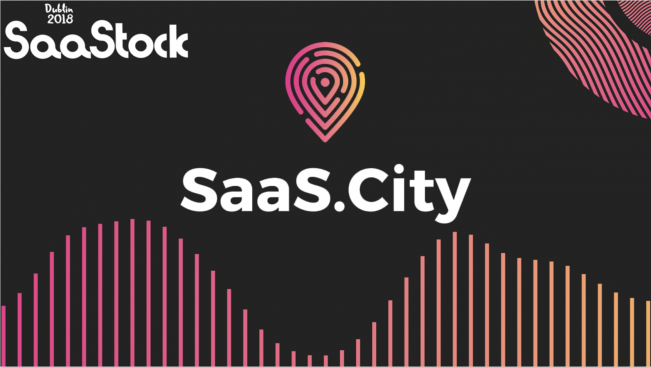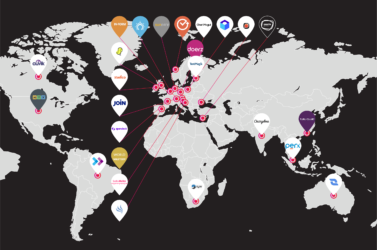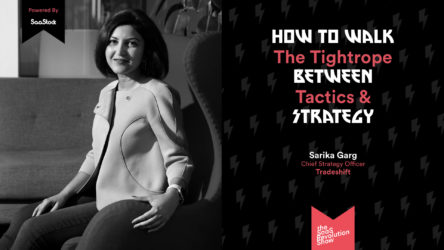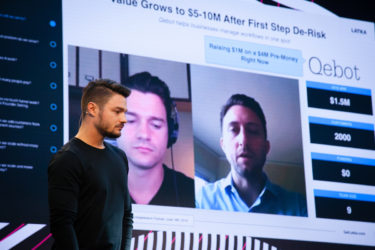Monday 15 October
You can’t be everywhere at once. That’s why we’ve created SaaStock Live, our on-the-go recaps of key sessions throughout SaaStock 2018. Our reporters, Annie and Despina, will keep you up to date and fill you in on exciting stuff you might have missed. Today? SaaS.City.
_____________________________________________________________________________
16:45 – As bootcamps end and Guinness are poured, some final thoughts
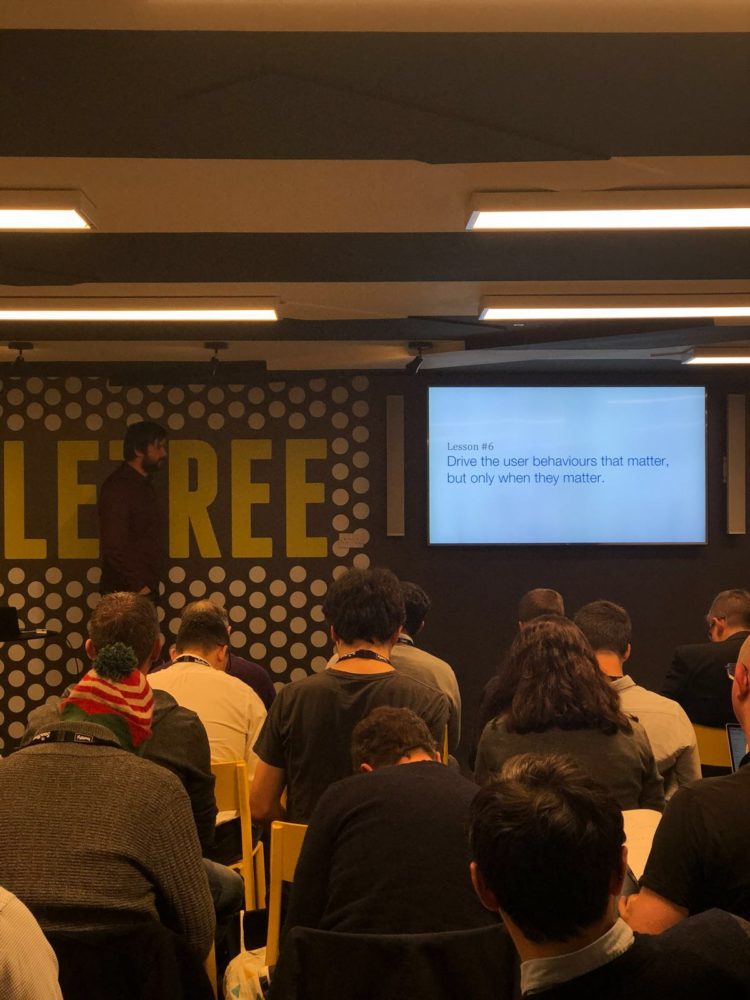
“There is such thing as too much on-boarding”- Ruairi Galavan, Production Education team leader at Intercom.
16:00 – Running a SaaS startup is like running a marathon: Lessons learned on keeping race-fit through to exit
John Thompson, Chairman of Briggs Associates
John Thompson shares the rollercoaster ride of his 17 years as a SaaS CEO. John has raised $15M, been successful in America, achieved an 8 figure exit, created software that has been used on $350B of projects, and been awarded an Honorary Doctorate. Behind these positive headlines there were plenty of struggles and near disasters, and that’s what John shared with us today in a truly honest presentation at the CEO bootcamp.
John talked through hard won lessons on building resilience, and most importantly: making sure you need less of it in the first place.
The Reality of being a SaaS CEO
Being a CEO isn’t a glossy magazine cover or a rockstar persona. It comes with several real world downsides and risks.
- Runway problems
“We were always thinking of the next round. Close shaves with nearly $0 in the bank. The night before we closed our first deal, we learned the terms needed to change after six months of negotiation. We had 2 weeks of runway in the bank. We were desperate; they had all the power and could make the rules.”
With SaaS, if the product doesn’t work, its on you. It isn’t the customers hardware, there’s nothing else to blame. You need to resources to fix and maintain, at all times. - Competitor Problems
- Customer Problems
- Lawyers. (Scary.)
- Cofounder problems
- Health, Death, and Divorce
“We like to invest in resilient CEOs,” say the investors. But all the stress and turmoil has to go somewhere, even if you don’t let it get to the surface. Blood pressure, heart health, and wellness should be a priority. - Firings. They aren’t fun. You lose friends.
Elements of the Entrepreneurial Struggle
- Awash with fight or flight chemicals. (Adrenal fatigue!)
- Lack of perspective
- Stress. Know the difference between responsibility and control
- The “it has to work” trap. Single-mindedness is great for shareholders but not great for you psychologically.
- Inevitable impact on physical and mental wellbeing
Resilience is like a leaky bucket. What can you do to solve this?
1) Have a less leaky bucket. Lessen your stressors.
2) Pour more in the top. Do the right things to restore yourself.
How to build resilience as a SaaS CEO
Exercise!!! Can’t say it enough.
Sleep. John recommends this book, Why We Sleep.
Watch your diet. And don’t use booze to relax!
Mindfulness. Explore a practice that works for you.
< 13 hour days. You can do it.
Take real breaks. Going to the beach and checking email on your phone doesn’t work. Do activities that consume your mind. John took up snowboarding in his 40s.
How to seek support as a SaaS CEO
Get a great executive assistant.
Find someone with the right energy and competency. Someone who can take on a variety of tasks. Someone you enjoy being around, who can make your day better.
Get a great coach (therapist, non-directive, mentor, consultant).
Several people in the group currently have a coach. All agreed that it might take some time to find the right one. Just because a colleague or investor recommends their own coach, don’t feel pressured to make it work if it doesn’t feel right.
Get a great chairman.
The chairman does have power; they’re a director. They have influence on the board. They’re not your boss, but there’s a bit of that dynamic in the chairman relationship.
“Ask yourself: is this the person I would call if shit hit the fan?”
Do you trust them? If so, bring them on as a chairman. They’ll help you through dark decisions.
Work on perspective.
Things are never as good as they seem, or as bad as they seem.
“We generally have a dramatized perspective on things.”
Have a plan. Step back and look at your life with a wide lens.
How to need less resilience as a SaaS CEO (a.k.a. how to ease your stressors)
Remember the 2% rule. Delegate! You don’t need to work twice as hard. The whole team can work a little harder together.
Make the short term tough. Do the hard things NOW.
“Take ambiguity out of the org chart.”
Customer, culture & top team. Not just how do they work with you, but how do they work together?
Coaching. Helps your judgment and perspective and coming to hard choices.
Cash. Raise more money and spend less.
“I let $800k sit in the bank for seven years. I may have made 20% less revenue than possible, but I’m glad I had that money safe.”
15:30 – We are officially trending on Twitter (sorry #RoyalBaby)
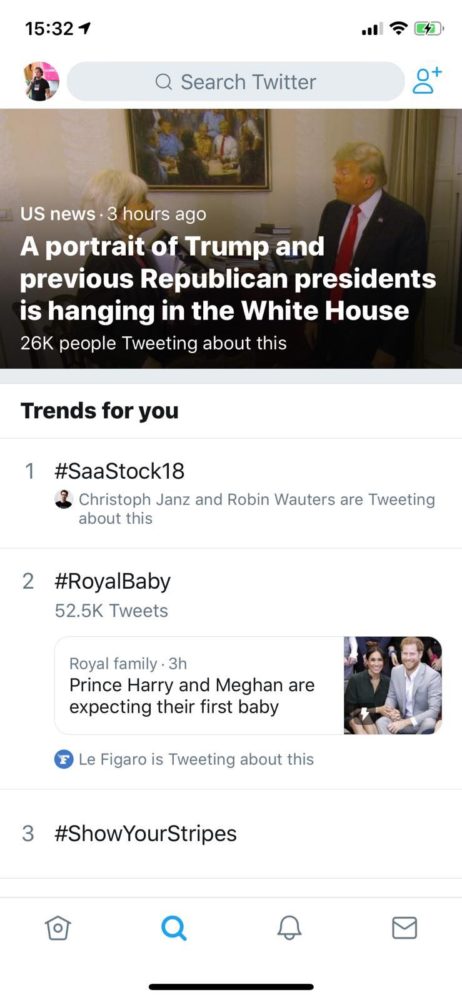
All about branding with @davegerhardt at #SaaStock18 pic.twitter.com/qsH4GV9a7U
— Nilesh Surana 🚀 (@nileshsurana) October 15, 2018
15:15 – What else is happening at SaaS.City?
The Startup Day is brimming. @michaellitt and @danmartell in the house. Attendees are in for a Canadian treat #SaaStock18 pic.twitter.com/AofJy6to1a
— SaaStock (@SaaStock) October 15, 2018
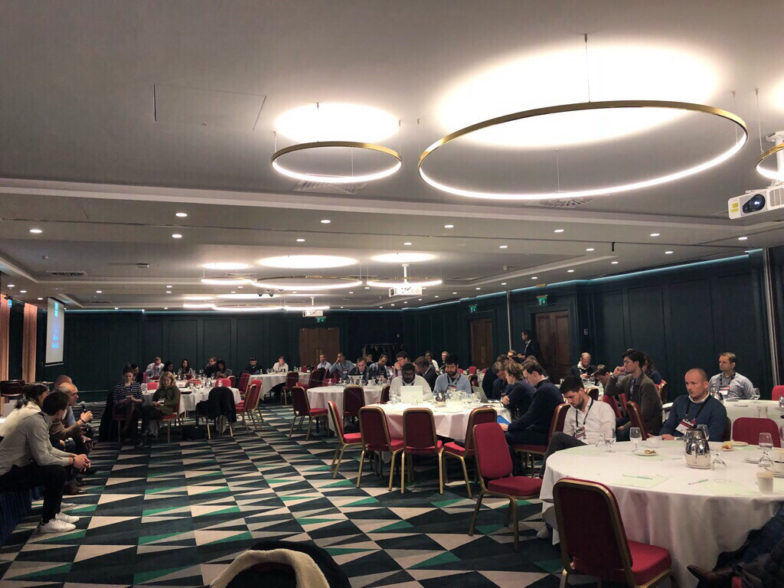
Portfolio value add VC panel with Salesforce ventures, notion, EQT and Hearst Digital
On the more technical side of things, we have AWS Solution Architects Andy Powell and Mike Morain over at the Architecting your SaaS for Growth Bootcamp. #SaaStock18 pic.twitter.com/CJe8WggVBm
— SaaStock (@SaaStock) October 15, 2018
Tactical and strategic support – that's what https://t.co/D0REUT2PNa is all about 🙌 #SaaStock18 https://t.co/W2LQ0OkqRI
— SaaStock (@SaaStock) October 15, 2018
CEO deep dive – translating the vision to the team with @carrie_loves_ from @CRUXY_CO at https://t.co/D0REUT2PNa today . For all those who'd like to know what's going on in more than one bootcamp, check out our live blog https://t.co/MJ30QmzROa pic.twitter.com/Z93QY1Je8X
— SaaStock (@SaaStock) October 15, 2018
15:00 – CEO Bootcamp with Carrie Osman, Founder and CEO, Cruxy and Company
Carrie took the stage determined to get personal conversations going that produced action items for everyone involved. Solution-oriented discussions insured each CEO came away with ideas for how to solve their own version of universal SaaS problems.
The smaller breakout groups could choose one of these topics:
- Org structure
- Hiring
- Culture
- Translating vision into action
Carrie laid out a format for the group discussions to follow. Answer these questions:
- What’s the biggest challenge for you?
- What did not work for you?
- What did work?
- 3 suggested actions to overcome the challenge
Turns out hiring was a hot topic among the CEOs at SaaStock. How do you find the right people? How can you trust they are a fit not only for the role, but also for the team?
Ultimately, a good hire is about finding the technical fit and the cultural fit in one candidate.
Here are the main points, concerns, questions, and suggested actions posed by group!
Challenge: Your business is in a smaller sized city with limited talent (or in a big city with high competition!)
Solution: Consider remote hires or expanding into another city.
Challenge: You lose someone who was an influential part of culture. A replacement could fill the technical gap but not the cultural gap. Culture challenge is part of the hiring challenge.
Solution: Incorporate “culture fit” into the recruiting process somehow. Involve your team. Know who the best person is to run recruitment and to discern culture fit. Who has good judge of character?
What doesn’t work: Hiring from the wrong sales background.
Remember that not all sales experience is relevant! Huge brand name products or enterprise products have a completely different sales style from SaaS. SaaS sellers need to hunt and hustle, be tenacious and educate their buyers about the product.
What does work: Find your target companies, which challenge sales people in the same ways you do, and then recruit their former employees.
What doesn’t work: Very experienced and expensive candidates who aren’t flexible.
What does work: Younger or less-experienced people who are more willing to be coached.
Other tips:
- Stay alert for professional people who may not have sales experience but are eager for a career change. One company has translated lawyers or engineers to sales people.
- Consider incorporating video into your application process, particularly for sales positions where personality is a huge factor in the role. Have the candidate speak about themselves, the company, and why they want to sell the product. This will give you a great first look at their approach and their attitude.
15:00 – Unlocking Scale Through Pricing: Free trials, freemium, paywalls, and more
Ashley Minogue and Kyle Poyar, OpenView
Pricing is your most powerful lever and a the same time a huge blind spot! You can get really scientific and still not get it. According to a survey OpenView 55% of companies do not have anyone owning pricing and only 9% have a dedicated person.
Owning pricing is very important in the product led world. You cannot rely on sales to communicate a price here. Everybody has their fair share but mainly customer facing team and product management!
Product-led growth pricing is not just for small deals.
3 elements of pricing to consider a product-led word:
- Free trial 47%
- Customer referral programs 29%
- PQL 28%
- Freemium 17%
- Freemium
Least common model, it can work when you have a massive market, when product becomes more valuable the more it is being used (natural network effect, product usage is embraced by usage), you have product differentiation to make a freemium a positive experience without giving away all your product’s value, you have a low cost to serve
Successful Example: Calendly went to market with a free product and:
- Got a bunch of users and find via data what people thought about the product
- Understanding what power users were doing
- Understand what people were supposed to pay for and what not
- Experimented with their pricing without publishing it on their website first
Unsuccessful example: Baremetrics:
- A huge amount of free users – more than they could afford, almost double from their paid users and they ultimately dropped this approach
Successful example: Hubspot: Website grader offered value for free (without giving away their product) and served as an awesome lead generation tool
Successful example: Jumpcloud: Freemium approach → Full product to only ten users and charging after that
- Enable bottom-up sales
- Build champions to sell your product internally
- Capitalize on paid lead generation
- Skip procurement or IT
- Entry price point must be low to bypass approval and be adopted instantly
- Pricing needs to be a landing point that allows for expansion as usage increases
Example: Yesware
Yesware’s blog focuses on individual sales reps who become pad lead gen from large accounts.
Example: Pipefy
Pipefy offers packages for teams as small as 5 users and offers templates to get started.
PQLs
The old world: Visitor comes to site and you try to get from data if he is a lead or not.
With PQL you try to draw results coming out from the product data
Example: Hubspot developed PQL funnel to drive meaningful revenue from free users.
Developed 3 different types of PQLs for freemium CRM:
- Hand Raise PQL
- Usage PQL
- Upgrade PQL
14:30 – Matt Sornson, Head of Growth & Marketing at Clearbit
Early in a company’s lifecycle, generating demand from content, paid channels and virality are paramount. But leads don’t drive revenue – customers do. In this interactive session, you’ll learn firsthand about conversion marketing, and the experiments you can try to accelerate your revenue from the experts at Clearbit.
Conversion marketing tactics to try:
- Advanced first touch- Intent based
- Advanced first touch – IP intelligence
- Industry based (IT, Healthcare) (change logos depending on the customers interests)
+ Increase signup conversion with short, dynamic forms
+ Only ask info you cannot get anywhere else
+ Reducing the number of form fields to 4 increases a lot conversions - Personalize customer onboarding
- Highlight the specific integrations that will bring the user more value
- Continue to personalize email drip campaigns for onboarding emails
+ Try role-based welcome emails. E.g. CEO versus marketing manager
+ Segment and target emails according to your data
Showcase of Clearbit’s smarter forms feature:
With this specific tool, you can ask for only the lead’s name and email, and Clearbit searches the domain to fill in the rest of the data.
Finally, the team did a live demo of the feature and created a sample form to showcase how it works.
There’s much more to come, so heading back in!
14:00 – Meanwhile, everywhere else
Great start to #saastock18 – excellent panel event – Best Practise for Internationalizing a #SaaS startup pic.twitter.com/7qKdb7Q8Fc
— Alan Gleeson 🇺🇦 (@AlanGleeson) October 15, 2018
Waiting for Mr @HubSpot to finish signing autographs with fans, before we head out to grab a bite for lunch before my session.
❤️ ya @searchbrat 💪🏼 pic.twitter.com/hWYFZA8lxL
— Ryan Bonnici ⚡️ CMO 🇦🇺🇲🇹🏳️🌈 (he/him) (@ryanbonnici) October 15, 2018
Pumped to kick off @SaaStock Conference by speaking at Growth Masterclass with @danmartell. Any other #Canadians in the house? #SaaStock18 https://t.co/8kiFtICKKp pic.twitter.com/EDh6C9KuXz
— Michael Litt (@michaellitt) October 15, 2018
Really practical workshop on onboarding free trial users with @aaron_krall at #SaaStock18 pic.twitter.com/20hY74r00L
— GoSquared (@GoSquared) October 15, 2018
12:45 – Leveraging Content to Fuel your Growth Engine with Edward Ford, Advance B2B
This session is about the role of content marketing and SEO as a demand driver within the product-led approach to growth. Combining strategic frameworks with practical tactics, this session will give you actionable takeaways that you can use to develop your own content marketing strategy.
- The challenge
What additional demand drivers do you have?
- The product is the primary acquisition channel but there are additional ones: Social media, referrals, blog posts
- Content needs to act as a magnet to the organic acquisition
- Organic traffic is super important
- Key takeaway: Identify additional acquisition channels via content
- The Solution
-
- Paid acquisition vs organic. So it is like renting or buying a house. Renting is like paid acquisition→ ydon’tont own your property buying is like organic you own content and is going to pay you back overtime.
- Think organic. But having said that dont build an audience: think a magazine versus a library
- Publication → long buying cycles, problem driven, focus on thought leadership, acquire (see slide)
- Publication takes longer to built a relationship
- Focus on being found for the pain point you are trying to solve.
- Who should I write for? (target audience) Mind the gap between buyers and actual users. Basically, target the user
- Buyer (parent)
- Target the buyer
- Conduct interviews
- Identify JTBD
- Map their jourvey
- Builed buyer personas
- User (child)
- Target the user
- Conduct interviews
Interviews slide analysis
- How to create content optimized for organic traffic
- The topic cluster (Hub & spoke) → Brand awareness, organic traffic, high quality on a limited number of topics. Pillar page: a lot of information on the topic, benefits, technology around the topic, internal link on related content on your site , its not traditional keywords driven content, google understand better the trends that way
The old way: Hubspot used to
Marketing, agency, sales (see slide)
Benefits of the approach (beyond that mentioned on the slide)
- HubSpot approach
- Focus on prioritization not keywods
- Evergreen content
Calendar management – topic cluster example
- Theme selection criteria
2) Skyscraper technique
- Best content
- do a google search, use a tool like Buzzsumo (to find shares)
- Create a better version of the content you found
- Reach out to the right people (people that have backlinked similar content for example in order to feature yours or people that pay for results on ads for example)
3) The call to action → create your own content strategy by answering the questions (see related slides
12:00 PM – What the Heck is Product-Led Growth?
Ashley Minogue, Director of Growth at OpenView Venture Partners
The world’s best SaaS companies leverage product-led growth (PLG) to grow faster than their competition. In this session, you’ll learn why PLG is the future and how to prepare your business.
“The next stage of growth is product-led and it actually affects every stage of the customer journey.” – Ashley Minogue
Ashley went through a timeline of tech go-to-market strategies, from field sales in the 1980s, to telesales in 1998, to the inbound adoption and content marketing of 2000s and finally to social selling automation in the 2010s.
After that whole evolution, what’s next?
The product-led era!
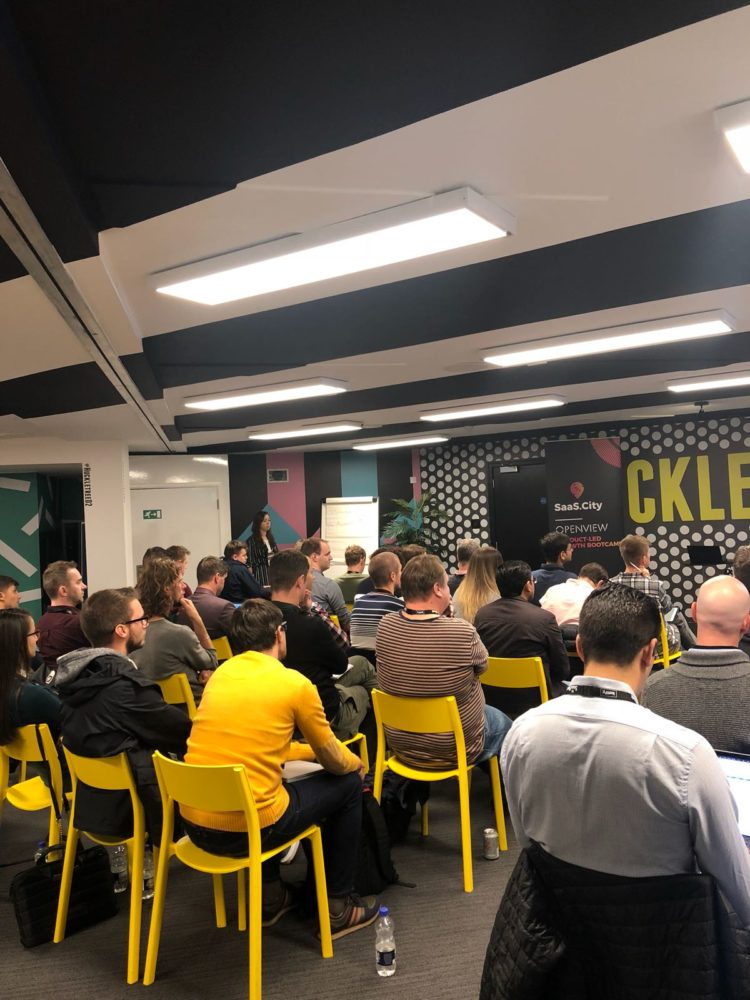
Product-led growth is the growth model propelling high-traction SaaS companies, like Slack, Atlassian, and Dropbox, which build their success with user insights derived directly from their products. In those companies, how the product is used serves as the primary driver of user acquisition, retention and expansion.
Moving forward, Ashley analyzed how product-led companies flip the script on every aspect of their business — be it product, marketing, pricing, or sales.
How product-led growth impacts different areas of the business
Product:
- Always start with your end users’ pain points
- Deliver the product value ASAP; don’t gate it in any way
- Entice the user to return to the product as often as possible
Marketing:
- Enable the product’s virality, internally and externally, by enabling users to bring along their team and invite others to use the product (free referrals!)
- The product should act as a marketing channel
- Target your end users, not your buyers
Pricing:
- Offer a free trial. Remove barriers from people who want to try the product before paying
- Introduce the price/cost after the customer has received the value
- Expand customers that have scale potential
- Use product data to upsell to your users, showcasing capabilities included in more expensive plans
Sales:
- Empower the self-serve approach, such as a self-service onboarding plan
- Customer success is your north star and ideally part of your sales department
- Create opportunities to upsell your product
- Be a product evangelist
11:30 AM – CEO Bootcamp
First up: Matthew Bellows, CEO of Yesware
Matthew facilitated a loose and lively discussion around the room, but he kicked it off with this one house rule.
“No one here is killing it.”
By this he meant: everyone has high times and low times, everyone is here to learn. No matter how you’re feeling about your business right now, even if you’re feeling amazing, we are all equal.
And so, on that note, about 50 CEOs from across Europe — plus some from the US, India, and Saudi Arabia — each stood up and introduced their business.
They also mentioned their #1 challenge at the moment. The issues most important to them?
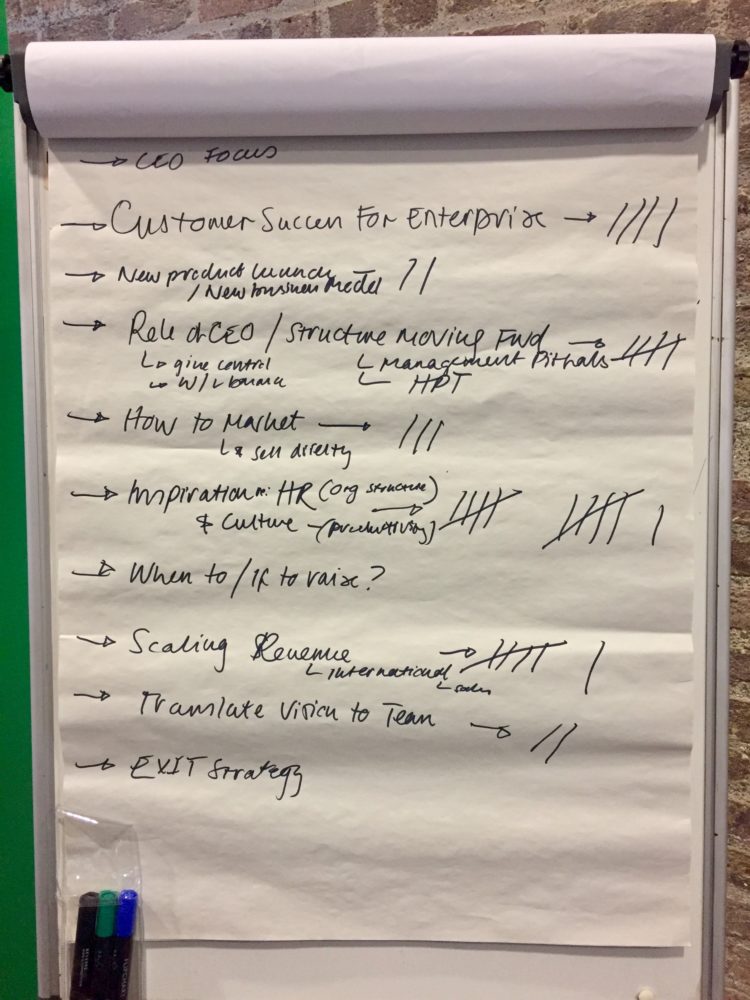
- Customer Success for SaaS enterprise
- New SaaS product launch
- Role of CEO and management structure moving forward
- How to market or sell
- People inspiration: HR (organization) and company culture (productivity)
- Whether to raise VC money and when
- Scaling revenue, going international
- Translate company vision to the team
- SaaS exit strategy
Here’s a collection of the perspectives shared at the CEO bootcamp, with a final key insight from the Dalai Lama. 😉
Team buy-in!
- You are so invested in your company, it’s everything. Doesn’t it hurt when you realize that your top employees aren’t as invested as you?
- It’s okay, maybe even preferable, if your exec or senior or management team isn’t 100% devoted, like you are. Because then they have the mental and emotional distance to preserve themselves and survive the rough times! Less burnout.
- If you want them to do anything for you, then you need to do anything for them.
Sharing equity with SaaS employees
An example scale of sharing equity is the following:
Entry level, scarily small percentage (it’s a symbol of ownership)
Each promotion, incremental increases
C level, .5-2.5%
New CEO, 3-5%
- If you don’t give away shares, how can you attract great people? How can you convince them to walk away from a great career with security and benefits?
- Matthew pointed out that sharing equity isn’t just about offering tangible benefits in a job package, but about bringing people into the fold. The VP wants to feel like a partner, not a salaried employee.
- When drawing up job offers, your shares are probably not worth anything. “When financial planning, you can zero it out.” But with some hard work, the options WILL be worth something.
- People need to come to work for you for much more important reasons.
- If you do win, you want everyone to win! You want them to make money, because they did probably most of the work. Share in it. And for tax and valuation reasons, it’s easier to issue those options early on.
- Sharing equity is easier and hands-off, compared to a complex compensation structure. It’s an ensured reward, rather than bonuses tied to aggressive goals, which the hardest working employee may or may not hit.
Aligning the team on objectives
- Create Key Results (KRs) for the company, not in team silos.
- Then break down KRs by “team objectives” – so everyone is working on the SAME GOAL but through different actions.
- Why doesn’t product management own this stuff? Well, these goals are more holistic, not only technical. Any change in product also involves changes in sales, in marketing, in support.
True meaning of life
Matthew closed with quote from the Dalai Lama.
“If you contribute to other people’s happiness, you will find the true goal, the true meaning of life.”
Matthew believes that CEOs are especially poised to contribute to other people’s happiness: their customers, their employees, their families. Once you focus on that, you’ll discover the meaning of life on your own.
Learn more from Matthew Bellows, CEO of Yesware, on this episode of The SaaS Revolution Show.
10:00 AM – Kickoff
In locations spotted around Dublin, SaaS.City bootcamps are kicking off! CEOs, VPs, investors, engineers, marketers, sellers, all kinds of hustlers have gathered to learn about their particular area of interest.
Annie’s currently posted at the CEO bootcamp, and Despina at Product-Led Growth. Soon we’ll start posting to give you the inside scoop. Stay tuned!
